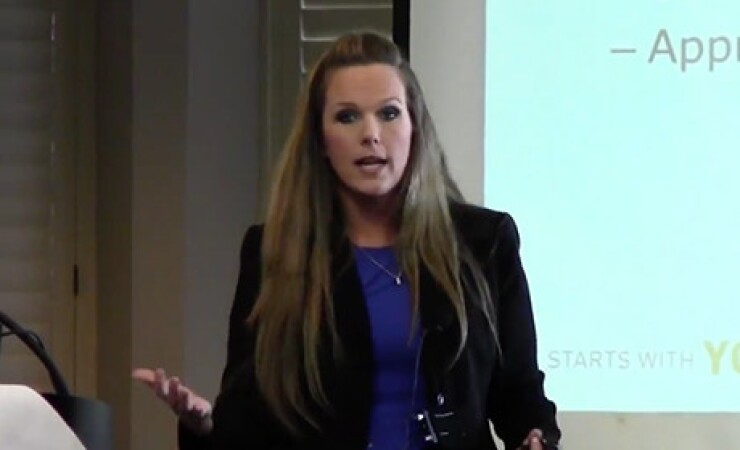The Filene Research Institute estimates that about 90 percent of all credit unions in the United States have at least a presence on either Facebook or Twitter, but the landscape is rapidly changing. Not only are functionalities within those two platforms evolving, but new apps are growing in popularity each day.
So how can credit unions master today’s social media space while also preparing for tomorrow?
Holly Fearing, social media adviser for Filene Research Institute, Madison, Wis., said having a social media strategy is more important now than ever before.
“So many organizations are using social media – 2 billion people are active users of social media, a huge percentage of the world population,” she said. “That means there is lots of competition, lots of noise. If you have a budget to invest in advertising, figure out who you want to reach so you are not wasting money.”

Dr. Brandi Stankovic, a Las Vegas-based credit union consultant with the firm Mitchell, Stankovic & Associates, said the key to CUs managing their social media presence is to be approachable and authentic.
“You have to be real, because any phoniness will not work,” she asserted. “Empower your employees that are familiar with the application to be able to share the messaging and brand of the institution. Approachable means welcoming, friendly, offering the opportunity to share on the two-way street.”
Matt Reber, VP, marketing and business development for $58 million Columbine Federal Credit Union, Centennial, Colo., believes social media should not necessarily be looked at as a marketing tool – at least not in the same vein as traditional advertising.

“The purpose of social media is to be social, not sell,” Reber explained. “Unless we have something really exciting going on we don’t post promotions. We use social media to interact with our members on a human level. We don’t tell them, ‘Come get this loan,’ we say, ‘Look at what we are doing.’”
When Columbine FCU opened its new headquarters two years ago, Reber said the credit union “really promoted it” on social media. “We let members know the progress of the project and the grand opening date. The response was fantastic. They want to see the exciting news and that we are growing.”
Using Facebook, Twitter differently
While the vast majority of credit unions have a Facebook and/or Twitter page, there are some improvements that could be made to increase the impact of those “older” social media outlets.
Filene’s Fearing said CUs should look at Twitter in a slightly different audience context. “I tell credit unions to use Twitter to reach out to local media, bloggers. It can be used to reach out to people who are writing stories. Use Twitter to pass along information about their credit union and the credit union movement in general.”
Fearing sees Facebook becoming “less viable” in the future. It is not going away, she quickly added, but she described Facebook as “becoming a lot more cluttered.”
“It is very competitive to get your messages through on Facebook,” she said, adding CUs still need to have a Facebook presence, but they will have to develop a strategy for how to reach their audience.
“Once you have built an audience, Facebook does not let you reach your audience for free,” she noted. “You have to do paid advertising just to reach your own fans. Organic posts are only seen by two percent of your fans. The average Facebook user has 400 friends and follows several groups or organizations, so Facebook has created an algorithm to deliver only select content. Facebook prioritizes your friends, but brands have to pay for that exposure.”
Brand ambassadors are a “sneaky” way around Facebook’s algorithm, Fearing said. If a CU has 20 employees who each use their personal Facebook network to share their personal connection with the credit union, when they share those messages all of their Facebook friends will see those posts. “That gives way more exposure for those posts without having to pay for it. This is old fashioned influencer marketing.”
Facebook will continue to evolve and will continue to be the “king of social media,” Fearing assessed. “But credit unions need to look at other outlets such as Pinterest and Instagram. It is true that people don’t want a mortgage, they want a house, and they don’t want a car loan, they want a car, so capitalize on that by posting pictures of homes and cars.”
Handling Complaints Made On Social Media
One issue that has flummoxed many companies in the digital age is learning how to deal with complaints made in the very public and visible space that is social media. More than one organization has tried simply deleting negative posts on their Facebook page – only to create an even larger problem when enraged users double down on their complaints and publicly call out the company for attempting to silence them.
Reber said upset members have left negative reviews on Columbine FCU’s Facebook page – and the credit union responds to those directly.
“One of the worst things you can do is engage in a public conversation,” he said. “What we do is pick up the phone and call the member, rather than have a series of responses. That more often than not makes a company look bad.”
Credit unions should have a policy in place to deal with complaints made “in the open,” meaning Facebook, Twitter, Yelp or other outlets, said Stankovic.
“It is an ethical decision, so it is vital for credit unions to be objective,” she said, noting one CU she works with has a policy not to remove posts unless they have foul language. “Some situations call for boilerplate responses, while others necessitate a crafted response. But ignoring complaints does not help. A best practice to focus on results – ask those posting complaints, ‘How can we address the situation?’ It also is important to empower the people who have to respond.”






